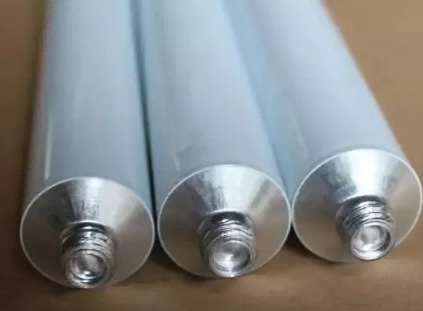Aluminum foil is a versatile material known for its excellent properties, making it widely used across various industries. One everyday item where aluminum foil plays a crucial role is the toothpaste tube. The use of aluminum foil in manufacturing toothpaste tubes ensures the quality and user experience of the product. This article explores the application of aluminum foil in toothpaste tube manufacturing and its advantages.
Application of Aluminum Foil in Toothpaste Tubes
Toothpaste tubes are typically made from multi-layer composite materials, with aluminum foil being a key component. The primary functions of aluminum foil in toothpaste tubes include:
1. Barrier Properties: Aluminum foil provides excellent barrier properties, effectively blocking air, moisture, light, and odors. This prevents the active ingredients in the toothpaste from oxidizing or degrading, thereby extending the product’s shelf life.
2. Maintaining Freshness: The aluminum foil layer helps keep the toothpaste fresh and effective during use. It prevents the volatilization of flavors and active ingredients in the toothpaste while also protecting it from external gases and contaminants.
3. Enhancing Structural Strength: As an intermediate layer in composite tubes, aluminum foil adds extra strength and durability. This ensures that the tube does not easily break or deform during squeezing and use.
4. Providing Excellent Printability: The smooth surface of aluminum foil allows for high-quality printing. Toothpaste brands can print logos, product information, and other details on the foil layer, enhancing the product’s appearance and brand recognition.

Manufacturing Process of Aluminum Foil Toothpaste Tubes
The manufacturing process of toothpaste tubes with aluminum foil involves several key steps:
1. Material Selection: High-quality aluminum foil and other composite materials such as polyethylene (PE) and polypropylene (PP) are chosen. The aluminum foil typically ranges from 20 to 30 microns in thickness to ensure barrier performance and mechanical strength.
2. Composite Processing: The aluminum foil is laminated with other materials through a composite process, forming a multi-layer structure. Common composite methods include co-extrusion and adhesive lamination.
3. Tube Formation: The laminated multi-layer material is rolled into a cylindrical shape, and the seams are bonded using heat or adhesive to form the basic tube structure.
4. Printing and Sealing: The tube surface is printed with brand logos, product information, and other details. One end of the tube is then sealed or crimped, and the other end is filled with toothpaste and sealed.

Advantages of Aluminum Foil in Toothpaste Tubes
1. Efficient Protection: The barrier properties of aluminum foil keep the toothpaste fresh and effective throughout its usage, preventing oxidation and contamination.
2. Sustainability: Aluminum foil is recyclable, helping to reduce environmental pollution and resource waste, aligning with modern environmental requirements.
3. Excellent Processability: Aluminum foil is easy to process and form, allowing for high-quality tube production through various composite and manufacturing techniques.
4. High Market Acceptance: Aluminum foil tubes are widely recognized in the market for their superior protection and attractive appearance, making them the preferred material for toothpaste packaging.
Sonuç
The application of aluminum foil in toothpaste tube manufacturing not only extends the shelf life and enhances the user experience of the toothpaste but also provides a better platform for brand presentation. With its excellent barrier properties, structural strength, and sustainability, aluminum foil plays an irreplaceable role in the toothpaste tube industry. As technology advances and manufacturing techniques improve, the application prospects of aluminum foil in this field will become even broader, continuing to deliver high-quality product experiences to consumers.


